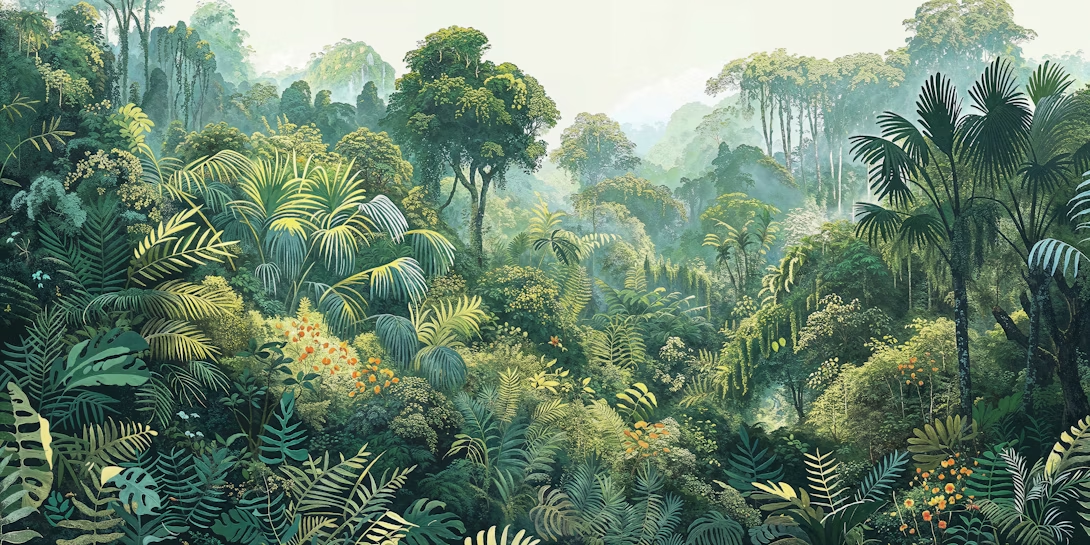
Robert Draws – Monika Morito’s Abstract Jungle emerges as a vivid reflection of two distinct worlds. Born in the early 1990s with German and Filipina heritage, Morito grew up surrounded by the structured calm of Munich while harboring a deep connection to the natural vibrancy of the Philippines. Her artworks bloom with tropical nostalgia, bright color palettes, and organic forms that whisper tales of her ancestry. Each canvas offers a different layer of memory and imagination, shaped by childhood stories and a longing for tropical forests, ocean light, and native flora. Though based in Germany, her creative universe reaches far beyond borders. She is not only preserving culture through abstraction but also inviting global audiences to experience emotion through nature-infused composition. With each exhibition, her brushstrokes feel like fragments of home layered onto geometric rhythm. Her vision is not just aesthetic; it is emotional cartography in motion.
To fully understand Monika Morito’s Abstract Jungle, one must look at the emotional and environmental duality that inspires her. The German side of her upbringing exposed her to structured minimalism and European art institutions, while the Filipina part gifted her a spiritual connection to organic life and vibrant nature. This intersection became her artistic identity. Raised in Munich, she visited the Philippines often during childhood. Her time spent under banana leaves, amidst coral shores and golden rains, later resurfaced as layered shapes and electric tones. Monika Morito’s Abstract Jungle does not copy the tropics; it reimagines it. Using acrylics and mixed media, she paints feelings instead of landscapes. Fluid shapes are merged with architectural balance, resulting in works that pulse with restrained chaos. Her art invites both reflection and raw sensory immersion. While her techniques reflect formal training, her soul remains tied to a place remembered more in emotion than geography.
“Read about: Kaleidoscopic Chaos or Masterpiece? Ilana Savdie’s Art Will Leave You Speechless!”
In her studio in Munich, Monika approaches the canvas like a memory map. Her process blends discipline with instinct, as seen in the way natural forms are translated into design language. Coral reefs become curved triangles, and rice paddies become clusters of abstract dots. This is the heart of her method: nature reorganized into new visual grammar. She does not aim to replicate the physical world. Instead, she creates microcosms where imagination and nostalgia intertwine. Her forms breathe with movement, almost floating within the compositional frame. The result is a paradox: chaos contained in order. In Monika Morito’s Abstract Jungle, color becomes narrative. Yellows hum with tropical sunlight. Teals suggest submerged oceans. Magenta blooms into unseen flowers. Although her work has been exhibited in contemporary European galleries, it is rooted in indigenous spirit. Her art honors organic balance not just as visual metaphor but as cultural memory reinterpreted on canvas.
Monika’s pieces often feel like travel without maps. Instead of direct symbols, viewers are given texture and hue to decode emotion. In this way, her art can feel both deeply personal and universally resonant. In Monika Morito’s Abstract Jungle, memory becomes terrain. Her lines suggest paths, crossings, departures. Her repetition of form implies rhythms learned through ritual or routine. Even the silence between shapes speaks of longing or reflection. Though influenced by Bauhaus symmetry, she rejects strict geometry in favor of fluid storytelling. For her, the canvas becomes a borderless diary where language is replaced by visual echo. Her upbringing in a bicultural household is mirrored in how contrast lives peacefully in her paintings. Color is not decoration here. It is identity. Her works are neither Filipino nor German but something uniquely hers. And because of that, her art has resonated globally, attracting collectors and curators who seek authenticity through abstraction.
Today, Monika Morito is considered one of the most compelling emerging abstract artists of her generation. Although her rise has been subtle, it is consistent. She has shown in group and solo exhibitions across Europe, with critical praise often focused on her emotional precision and cultural honesty. Collaborations with fashion designers and architects have also expanded her visibility beyond the gallery space. But Morito remains grounded. She speaks softly about success, focusing instead on the ongoing evolution of her work. In Monika Morito’s Abstract Jungle, no piece is ever truly finished. She often revisits earlier works, adding new layers years later as her perspective matures. This commitment to growth makes her an artist to watch. The global art world has begun to take notice not just of her skill, but of the voice behind the vision. What began as personal reflection has become a collective invitation to feel more deeply, see more clearly, and connect more freely.